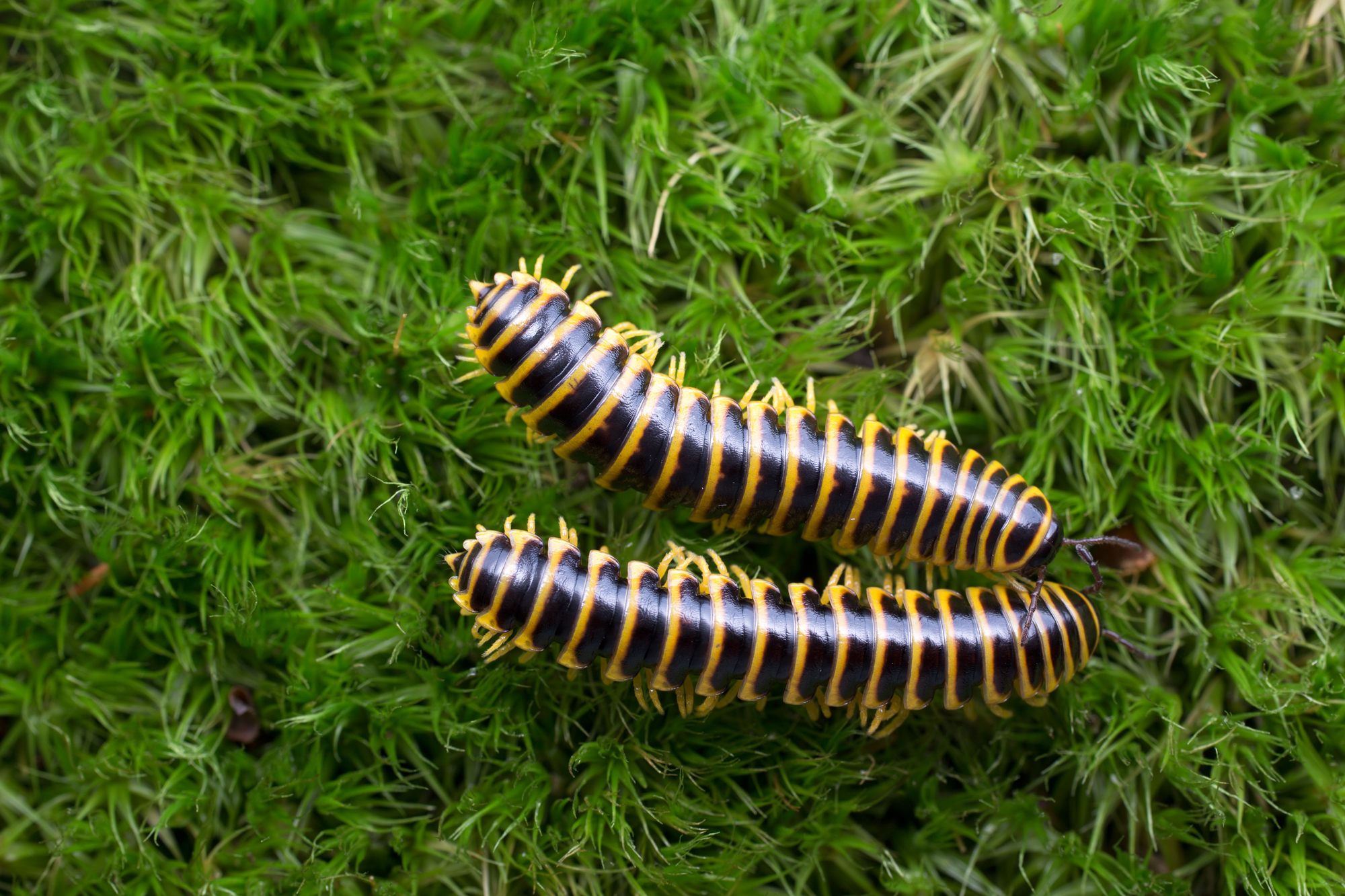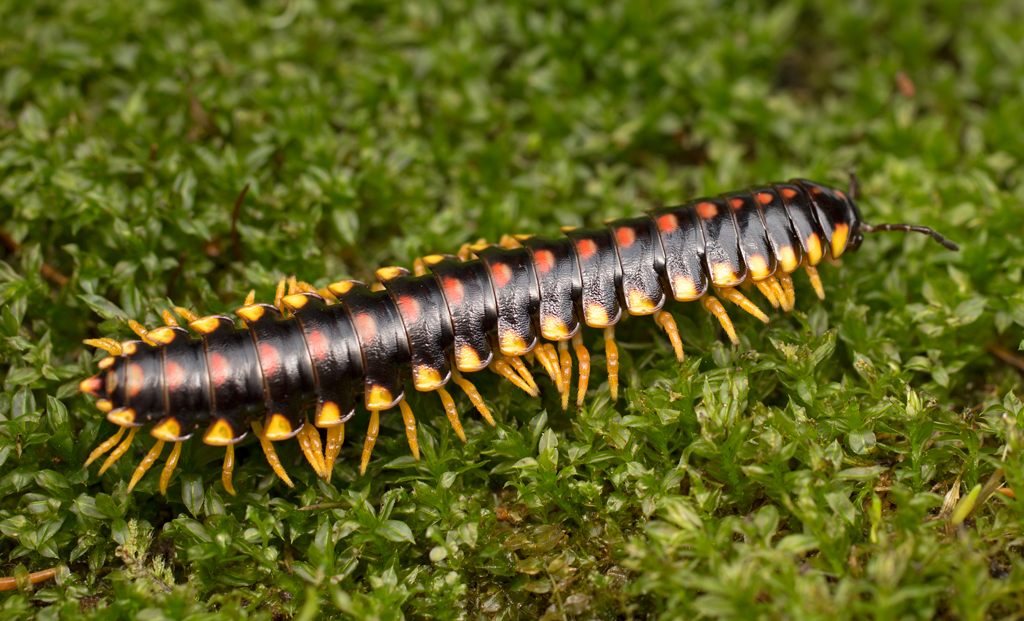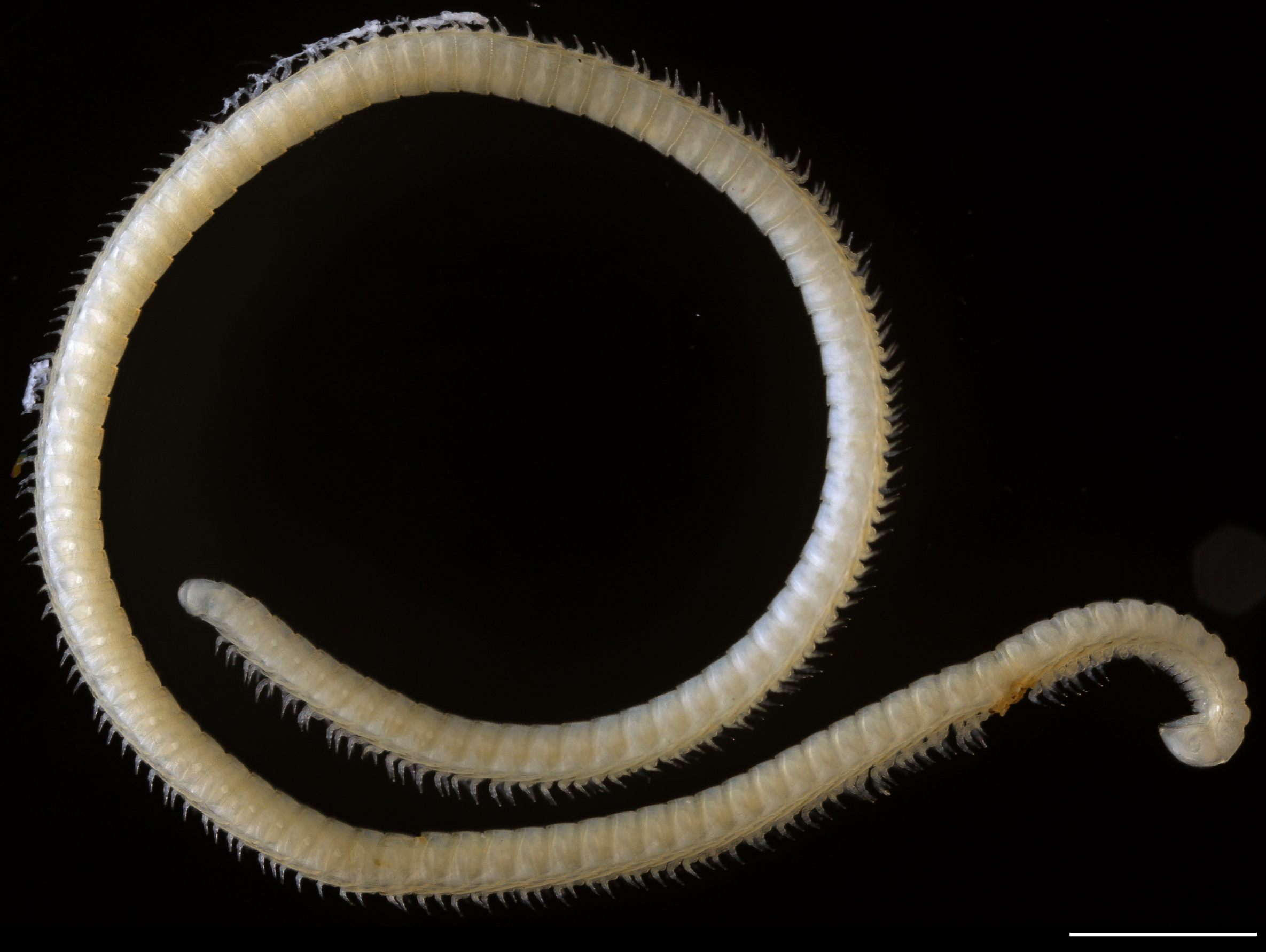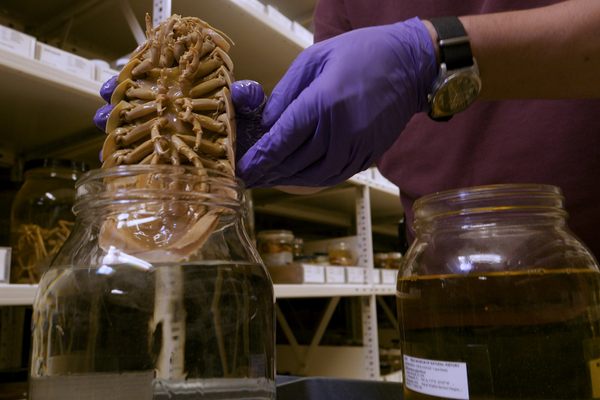Up Close With the First and Only Millipede Lab in the United States
They got legs, and they know how to use them.

If you’ve seen something with a lot of legs scuttling through your house, chances are it was not a millipede, but a centipede. You’re forgiven for not always being able to tell the difference. Centipedes are flat, with one set of spindly legs per segment. They’re venomous, carnivorous, and actually not a bad thing to have in the home, if you can stomach them, since they eat other bugs. Millipedes, on the other hand, are rounder like worms, with two sets of legs per segment, and feed on decaying plants.
“Millipedes play a very important but overlooked role for the environment,” says Paul Marek, an entomologist (they study more than just insects) at Virginia Tech University who, for the past four years, has been running the first and only millipede lab in the country.
“And there are a lot more of them than people realize.” Indeed, last time scientists counted there were 12,000 different species of millipede, from the delicately banded desert millipede to the garish, recently identified, poisonous Apheloria polychroma. The search for more goes on. “This part of the Appalachians has an outstanding biodiversity and we often encounter many species which are new to science,” Marek says.

To document this biodiversity—and ensure that species don’t go extinct before they’re ever identified—Marek’s millipede lab team, including Jackson Means, Derek Hennen, Grant Schiermeyer, and Victoria Wong is on a mission to find, study, and catalogue every millipede they can get their hands on. (They wear gloves, since millipedes tend to secrete noxious chemicals as a form of defense.)
“The main thing we do is going out to the field to find specimens,” says Derek Hennen, a doctoral student who joined the lab in 2015, “and then study the finds morphologically, anatomically, and genetically.”
In 2013, Marek became curator of the university’s 400,000-strong insect and arthropod collection, which dates back to the 19th century and includes many thousands of millipedes. “We looked at the specimens in that collection and mapped them on Google Earth,” he says. The resulting millipede map helps Marek’s team decide where to search next. “We like to think of our process of discovery as big obscure puzzle. Everytime we find a millipede we add a piece to that puzzle,” Hennen explains. “So it’s pretty fun.” These week-long discovery trips often stay close to home, but also extend to more far-flung locations, including California and Vietnam.

During one trip in California, Marek encountered a record-breaker—the world’s leggiest animal of any kind, a rare cave millipede with 750 legs. “It’s a very bizarre creature that is more similar to ancient millipedes than to the ones around today,” says Marek.
Despite their name, no millipede has yet gotten to 1,000 legs, but it’s starting to seem like it could be within reach. “There could be some out there that have more than 750 legs,” Marek says. “Some millipedes can theoretically develop legs as long they live, so they could grow them ad infinitum.”
Another California find happened a few years ago, when Marek spotted a rare millipede that had not been reported for 50 years. “I found it and brought it back to the lab. But it was only when I was sitting back in the dark room—where the team develops millipede photos—that I realized it is bioluminescent.” Xystocheir bistipita turned out to be the southernmost species of bioluminescent millipede known to science, a discovery that filled a long-standing gap in the evolutionary history of this trait, which probably evolved as a warning to predators.

Finding, identifying, naming, and mapping new species of millipedes is more than a taxonomic exercise. They play an important ecological role, and many species in the Appalachians are at risk. By feeding on decaying wood and leaves, millipedes break down nutrients so they can then be taken back up by plants. “I like to think of them as little tractors going around and breaking things down,” says Jackson Means, a graduate student who has been working in the lab for three years. “And if we didn’t have them we would have a whole lot of dead leaves and logs lying around,” Marek adds.
In the Appalachians—forested mountains separated by waterways and valleys—many millipedes and other small creatures might have very narrow ranges, sometimes just a few square miles. This phenomenon, known as “short range endemism” means great diversity. “It’s great to do be based at the heart of the Appalachia, which is a millipede diversity hotspot in North America” says Marek. “It’s a way for us to tie our entomology research into the space we work in, it has this very local connection.
“But because of this short range endemism, if human development was to destroy even a small area of the forest we would lose a species that was never known to science.” And this is all too common in the Appalachians, where the range of an entire species can be swept aside in a single paroxysm of mountaintop removal coal mining.
“To go back to the metaphor of the puzzle,” Means says, “we would forever lose that pieces of the puzzle and we would not even know that that piece was ever there. That’s what brings me into the office everyday. That and the fact we get to see many beautiful places.”
“They like beauty, millipedes” Marek adds. “Even if they don’t have eyes.”













Follow us on Twitter to get the latest on the world's hidden wonders.
Like us on Facebook to get the latest on the world's hidden wonders.
Follow us on Twitter Like us on Facebook